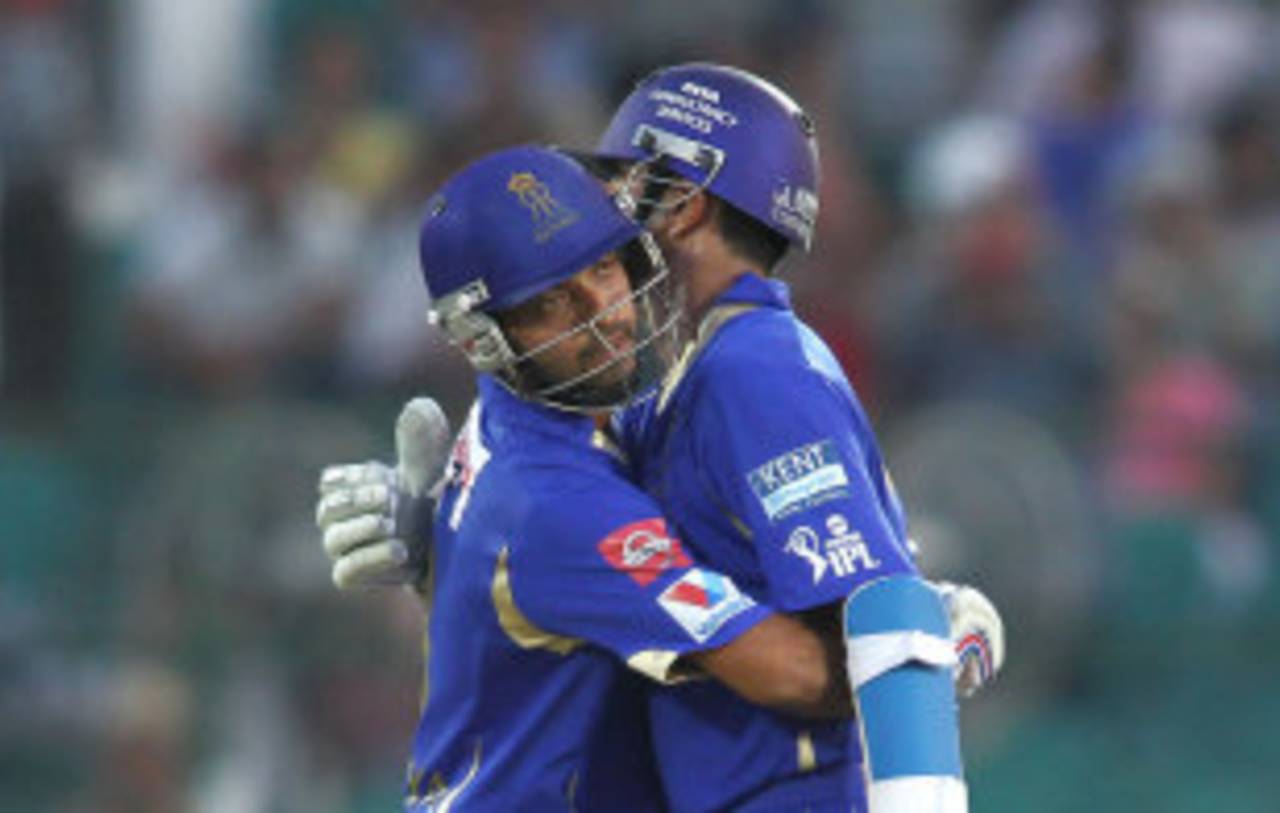A Twenty20 chase finished with nine wickets in hand and 13 balls to spare. As easy as it gets, says the scoreboard. Don't believe the scoreboard. Rahul Dravid and Ajinkya Rahane may have become only the third pair in IPL history to make more than 1000 runs but their first century stand was hard earned against a testing attack on a helpful pitch, with some slices of fortune.
Umesh Yadav, Morne Morkel, Siddarth Kaul. That is some serious pace charging in. There was lots of bounce, some seam and some swing. And for the initial few overs, Dravid and Rahane were really up against it. Unfortunately for Daredevils, their batting had failed for the umpteenth time this season, and Dravid and Rahane were never behind the asking rate.
And the Daredevils fast bowlers never looked far away from a wicket, although it wasn't to come until it was too late. Dravid and Rahane were beaten by pace, by bounce, by movement. The pushed, they mistimed, and they survived, barely. Irrespective of the format, two classical batsmen were trying to make it through the early burst with the new ball from fresh fast bowlers on a track that was doing something.
Forget the asking rate. This was about getting bat to ball first, something with which Dravid, in particular, was struggling at first as Kaul opened the chase with a maiden. Dravid was beaten on the cut, and he was beaten on the prod as Kaul got it to move away and climb. At the other end, Yadav moved it both ways in the late 140s, and the 40-year old opener looked quite late on the ball. Morkel presented a different proposition with his steep bounce from short of a good length. Rahane escaped with a thick inside edge past the stumps.
One thing going for this prolific pairing is its calm, though. There was about one attempt from each batsman to play against their nature, to try to break free when the ball wasn't quite there for the shot. It is fine when you are beaten for pace and bounce trying a cut a wide ball. The shot is clearly on.
This wasn't the case when Rahane tried to loft a drive over the off side against Morkel, as it wasn't when Dravid tried to manufacture a cover drive against Kaul. Rahane survived a dropped chance, Dravid managed to awkwardly slice the ball over point.
There was hardly another attempt at forcing it. No on-the-up fancy drives when not in position for the shot. No blind charges down the pitch. No cuteness. They just put the loose delivery away, in plain old fashion.
As he slowly found his touch, Dravid showed what is your strength at 30 can remain your strength at 40, as he clipped deliveries off the pad for boundaries with minimal effort and maximum timing. Rahane almost never turns to the standard slogging area of cow corner, and once again stuck to what has worked for him in this format. Straight, lofted punches, and carves over extra cover, an area his mentor Dravid targeted as well with inside-out drives.
This was a pitch that could take you by surprise even late into your innings. The ball Dravid got his fifty with kicked and flew at him after hitting a crack in the pitch. He was trying to go midwicket, the ball went to third man.
Shane Watson came in and smashed it around with power but one wonders if a batsman as aggressive as him would have been able to survive that tense early period. Then again, even Dravid and Rahane could have got out to one of the deliveries that beat them. They got past that stage, though, and made sure their labour translated into lots of runs. This wasn't a brutal thrashing. It was gritty, hang-in-there and target-the-bad-ball stuff, and it was absorbing to watch.
Abhishek Purohit is a sub-editor at ESPNcricinfo
